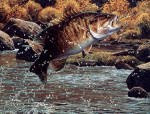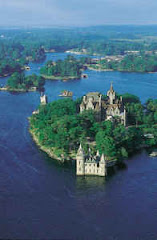Muskellunge
The current statewide regulations for muskellunge call for a 30-inch minimum length requirement although that requirement is 40 inches for Chautauqua Lake and the rivers and streams in St. Lawrence County. The proposed regulation would set the statewide minimum length requirement for muskellunge at 40 inches.
The current minimum length requirement for muskellunge in the Niagara River, Lake Ontario, and the St. Lawrence River is 48 inches, but the new regulations call for a 54-inch minimum-length requirement on those waters. That 54-inch requirement is presently in effect for Lake Erie and its tributaries.The traditional muskellunge season has opened on the third Saturday in June, but the proposed regulation calls for opening the season three weeks earlier on the last Saturday in May.
The current statewide regulations for muskellunge call for a 30-inch minimum length requirement although that requirement is 40 inches for Chautauqua Lake and the rivers and streams in St. Lawrence County. The proposed regulation would set the statewide minimum length requirement for muskellunge at 40 inches.
The current minimum length requirement for muskellunge in the Niagara River, Lake Ontario, and the St. Lawrence River is 48 inches, but the new regulations call for a 54-inch minimum-length requirement on those waters. That 54-inch requirement is presently in effect for Lake Erie and its tributaries.The traditional muskellunge season has opened on the third Saturday in June, but the proposed regulation calls for opening the season three weeks earlier on the last Saturday in May.




